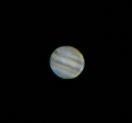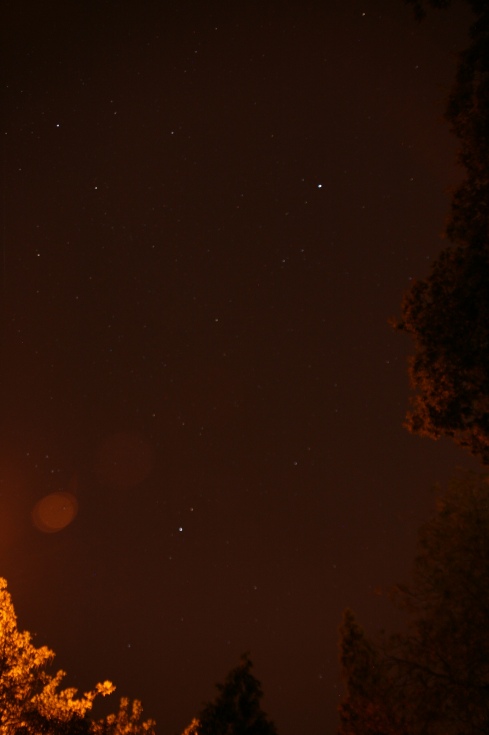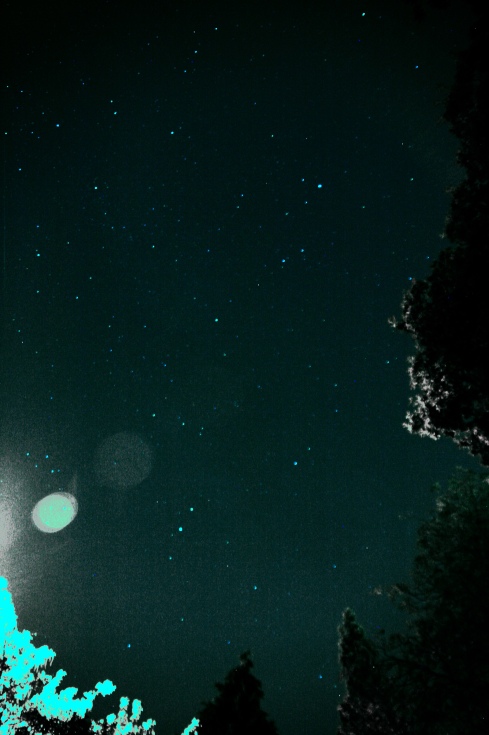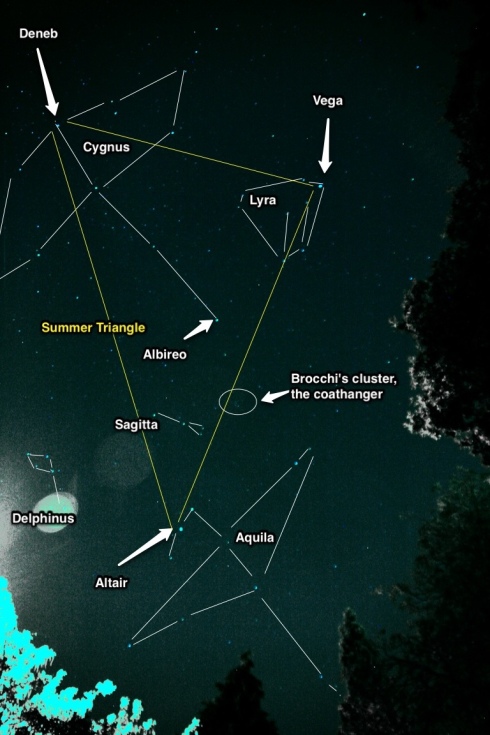Location: Home, Garden , Top of the drive
Conditions: clear, reasonable seeing. Cloudy later.
Equipment: Skywatcher 130, AsdaCam
Highlights: Jupiter
Good clear skies tonight. Jupiter was the first thing I set my sights on and I got so caught up in it that I didn’t move the scope to another target all evening. First of all my notes taken while observing and then the results of the imaging I tried.
21:47 Jupiter seems to be the main prize for tonight. Looking ok in 25mm eyepiece. 2 moons visible. With the 6mm eyepiece signs of banding are showing.
Fitted the RA motor so I’ve got it tracking reasonably well. Occasional dec tweak needed so not perfectly aligned but good enough for me.
I slotted the AsdaCam webcam into the eyepiece socket and shot some AVIs.
Io is supposed to be transiting but I can’t see it. I think I may have seen a notch at the edge of the disk earlier in the 6mm but I can’t be absolutely certain.
Actually, I can see three of the moons. Callisto is visible to N.
According to SkySafari+ the Great Red Spot is meant to be visible – can’t see it visually though.
22:15 The clouds are starting to close in. Rather than pack up though I’m sitting in the garden with the laptop and have set Registax processing the first of the AVIs I shot of Jupiter. I decided I couldn’t wait until later. Also, if I’m doing it wrong I’d rather know now when I have chance to retry than find out later after I’ve packed up and gone in.
So while that processes the clouds have cleared a bit. In between breaks in the cloud I’m writing up these notes.
Meanwhile tried the 6mm barlowed. The disk is huge but not much detail. This cheap and basic barlow does degrade the image.
Cloud settling so making notes now. If it clears I’ll look again. It would be cool to see Io come off the disk.
Tried with moon filter and barlow on 6mm to increase contract. Too much glass in the way now. Barlow off. Hard to tell if moon filter helps. It tones down the brightness but doesn’t help contrast. Tried green wratten 56 filter. Wow that brings out contrast.
I should look into planetary filters. Which colours are best for Jupiter?
Registax has finshed stacking. Had a quick play with the wavelets. Oh wow!!! Got an image with some colour and banding detail. More than I can see visually.
…And the laptop battery dies before could save the test stacking. Not a problem as the source AVIs are safe and now I know the potential is there to pull something from these AVIs. If this patch of cloud doesn’t clear I’m off inside to process them.
22:25. A break in the cloud but not enough to see Io come off the disk. Lets focus instead on the belts.
Northern Equatorial is almost at centre. Can see Southern Equatorial too.
Made a quick sketch. It’ll be interesting to compare with the photos I get from Registax.
22:38. Packing up now. Too much cloud. I’m abandoning the sketch. I think I’m just sketching what I think I saw earlier.
Once inside I had another go at processing my AVIs in Registax. This is a piece of free software that takes a video you’ve shot with a webcam or a series of still frames, finds the best frames and then combines them with some clever processing to bring out more detail. Whilst the workflow is pretty much the same with every image there’s a lot of parameters to choose so on these first attempts it’s a bit trial and error. My first attempt at an image isn’t bad though. It’s clearly Jupiter and it is quite exciting to see this on screen and know that I shot that, in my garden, with a hacked webcam that cost £3 from Asda. It’s 400 million miles away.

I posted the picture to Twitter and Facebook and went to bed, picking up a few positive comments from friends.
I had another go at processing the following day on Saturday. I did a bit of tweaking in Photoshop after to rotate 180° as the image through the scope was inverted. I also resampled it so that it wasn’t so pixelated when enlarged a bit. A further tweak on the contrast brought out the Great Red Spot at the right edge of the Southern Belt. I got excited again at this. I knew it should be there when I was observing visually but couldn’t see it. It’s incredible the extra information you can pull out this way. Think I need to get a better webcam with higher resolution.










![My Broken Heart [Explore 15/5/24] My Broken Heart [Explore 15/5/24]](https://live.staticflickr.com/65535/53722911143_d5a75671ec_s.jpg)


